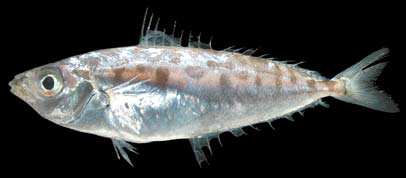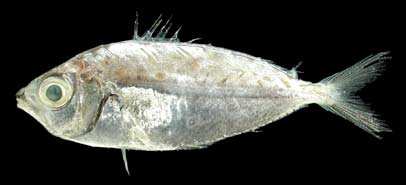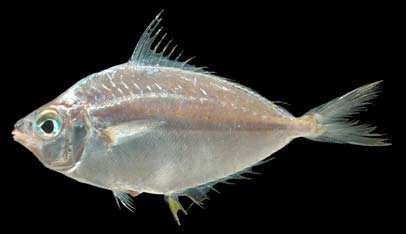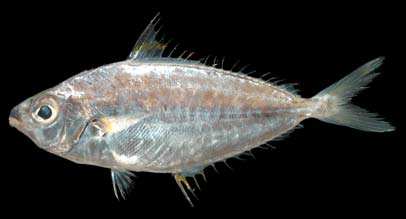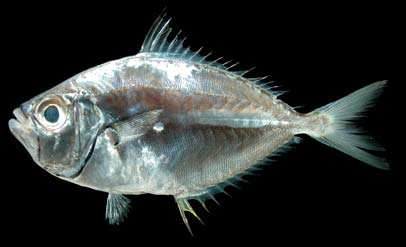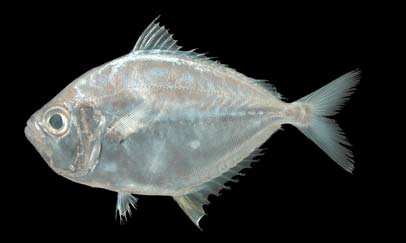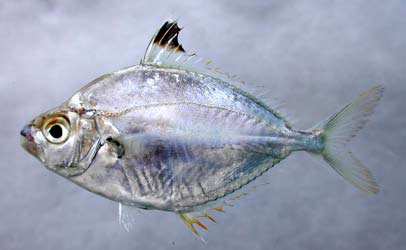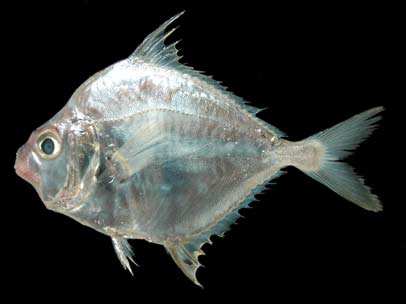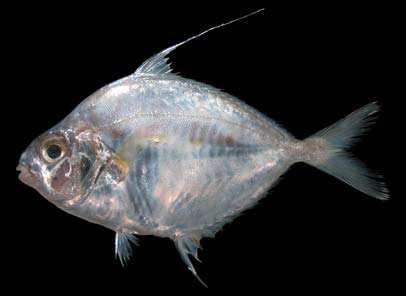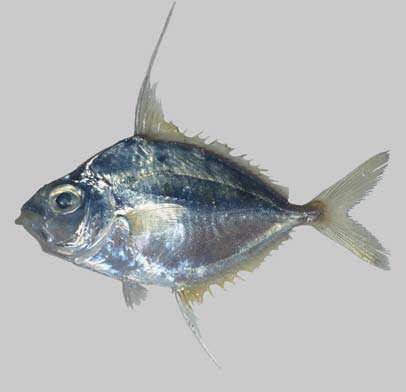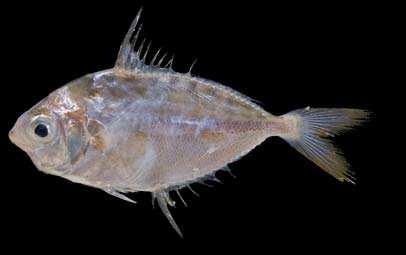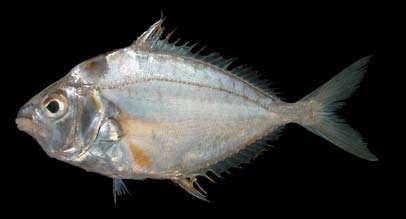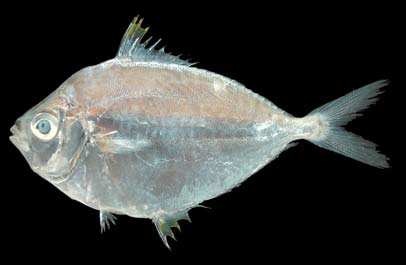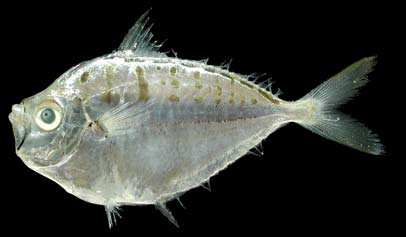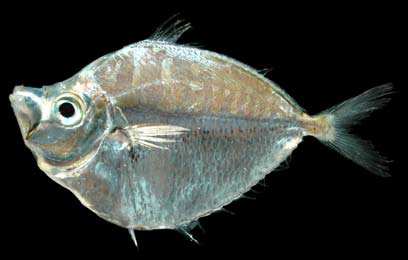LEIOGNATHIDAE
Slipmouths (Ponyfishes)
By Seishi Kimura
|
Small to medium-sized marine and brackish fishes; maximum size about 25 cm. Body slimy and deep, ovate, strongly compressed, except a few species. Head usually naked (cheek scales present in some species) with bony ridges on upper surface; a median bony ridge (crest) on nape; mouth small, highly protrusible; no pseudobranchiae; gill membranes united with isthmus. Unique light organ encircling the posterior part of esophagus. Scales small cycloid easily shed. A single dorsal fin, lacking a distinct notch, with VII-IX spines (usually VIII) and 15-17 (usually 16) soft rays; anal fin usually with III spines and 13-15 (usually 14) soft rays; pelvic fin I, 5; caudal fin forked. Vertebral counts 22-24. Color: body generally silver; dark vertical bars or yellow spots on body, a black blotch on top of dorsal fin, yellow vertical fin margins in some species. Similar families occurring in the area. Leiognathidae is distinguished from the following similar families in having strongly protrusible mouth, naked head (except cheek in some species), and small cycloid scales on body. Carangidae: 2 dorsal fins; mouth not highly protrusible. Gerreidae: scales large; head scaled; scaly sheath along the bases of dorsal and anal fins well developed. Remarks. Occurring in tropical to temperate marine and estuarine areas. The generic names follow Kimura et al. (2008a, b, c). |

|
|
